This was my 18th year coaching and/or participating in the Memorial Day Murph Hero workout in honor of Lt. Michael Murphy, a Navy SEAL posthumously awarded the Medal of Honor for his actions in Afghanistan, and, as always, it was a rewarding experience (which it should be when correctly prescribed — more on that later). Each year during Murph, we celebrate those who have committed the ultimate sacrifice by pushing our mental and physical boundaries, and the fittest among us even wear vests when appropriate to symbolize that we carry their fight.
As trainers, we love this day because we get to watch our athletes accomplish a commendable physical task and celebrate with them, making Murph an overwhelmingly positive experience for all of us.
Murph
For time:
1-mile run
100 pull-ups
200 push-ups
300 air squats
1-mile run
- Partition the pull-ups, push-ups, and squats as needed.
- If you’ve got a 14/20-lb vest or body armor, wear it.
This workout is a tribute to Murphy’s heroism and sacrifice. He called it Body Armor and used it as a training tool for his service as a SEAL. Over the years, it has grown in popularity among mainstream media, leading to celebrities, influencers, and others doing it.
While it’s encouraging to see others challenge themselves and participate in a worthy cause, pushing and encouraging deconditioned people to do Murph is irresponsible.
In a recent article on msn.com, “Doctors’ warning as two people’s biceps ‘blow up’ while exercising,” the author details the stories of two individuals who got rhabdomyolysis, one who did Murph and the other who was training for it. One individual who completed Murph was a strongman competitor who had only performed four CrossFit workouts before attempting it. The other was in her second week of preparation when she performed 50 pull-ups. The photos in the article show her in a globo gym, one of which shows her performing a squat in a Smith machine. It appears both these individuals undertook this challenge, as many do now on Memorial Day, without the supervision of an accredited trainer. The article highlighted, “Doctors warn of CrossFit challenge as woman’s biceps ‘EXPLODE.’”
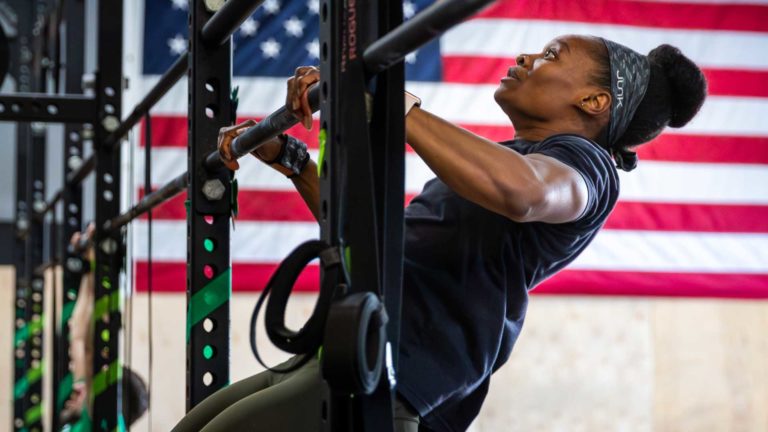 That “explosion” is called rhabdomyolysis or rhabdo for short. Rhabdo is a medical condition that occurs when damaged skeletal muscle tissue breaks down rapidly, releasing myoglobin into the bloodstream. This typically occurs when someone exercises beyond their fatigue point, particularly during activities involving eccentric muscle contractions (where muscles lengthen while simultaneously attempting to contract, e.g., a pull-up), and it can impact the kidneys, which may require receiving IV bags or more.
That “explosion” is called rhabdomyolysis or rhabdo for short. Rhabdo is a medical condition that occurs when damaged skeletal muscle tissue breaks down rapidly, releasing myoglobin into the bloodstream. This typically occurs when someone exercises beyond their fatigue point, particularly during activities involving eccentric muscle contractions (where muscles lengthen while simultaneously attempting to contract, e.g., a pull-up), and it can impact the kidneys, which may require receiving IV bags or more.
That type of rhabdomyolysis is called exertional rhabdomyolysis. The other type is called clinical rhabdo, which encompasses all cases regardless of cause, including those from crush injuries, medications, substance use, electrolyte disorders, infections, and metabolic conditions.
You can 100% get exertional rhabdo from a CrossFit workout, a marathon, a boot camp program, or a football program. For more on incidence rates, read “CrossFit and Rhabdomyolysis: A case series of 11 patients presenting at a single academic institution” and “Exertional Rhabdomyolysis After CrossFit Exercise.” In both articles, you’ll note the authors saying CrossFit can be extremely dangerous and lead to rhabdo if a person new to CrossFit chooses to do a super high-intensity endurance workout like Murph without instruction, coaching, or scaling, or, as in the case study, a person takes time off and then jumps back in with “three hours of abdominal crunches, sit-ups, and weight lifting.”
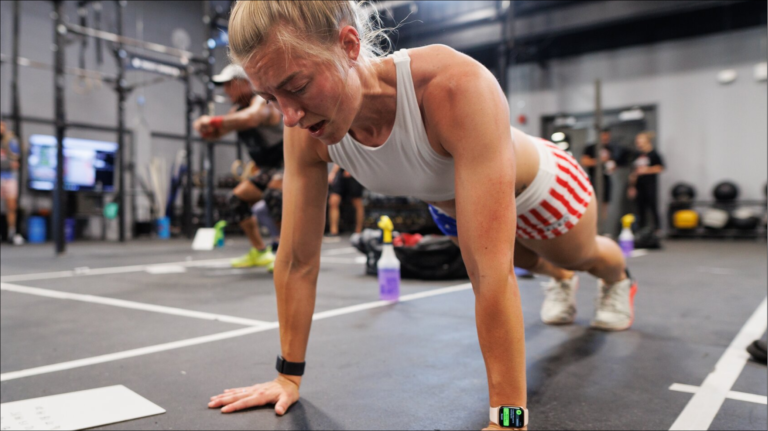 Professional CrossFit coaches would NEVER put athletes in the situation where they would program Murph or a similar workout without instruction, coaching, or scaling. The research articles citing injury incidents misrepresent CrossFit by focusing on novices or returning athletes performing hours of uncoached sit-ups, weightlifting, and pull-ups. Simply executing movements that appear in CrossFit affiliates doesn’t mean someone is actually doing CrossFit. True CrossFit requires appropriate guidance, progression, and methodology — not just the exercises themselves.
Professional CrossFit coaches would NEVER put athletes in the situation where they would program Murph or a similar workout without instruction, coaching, or scaling. The research articles citing injury incidents misrepresent CrossFit by focusing on novices or returning athletes performing hours of uncoached sit-ups, weightlifting, and pull-ups. Simply executing movements that appear in CrossFit affiliates doesn’t mean someone is actually doing CrossFit. True CrossFit requires appropriate guidance, progression, and methodology — not just the exercises themselves.
So yes, in terms of the article, it would not be unusual for rhabdo to be a consequence of those athletes’ choices, and also, rhabdo is 100% avoidable and extremely rare in CrossFit affiliates.
CrossFit is the most rigorous mainstream fitness training program in the world. We do not shy away or apologize for that — we embrace it. I have an 80-year-old client named Jean who started CrossFit with me 18 years ago. She has religiously trained two to three times per week, rarely with a week off, unless it’s for travel. She has more functional movement capacity now than she did in her 50s. I’ve also trained a six-time Games athlete named Carleen for 15 years who has completed Murph numerous times, including at the Games twice. She has also completed multiple military-like 48-hour physical challenges where athletes perform challenges with no sleep. Jean trains so she can play golf, hike, travel with her kids and grandkids, and live as high a quality of life as possible. She’s crushing it. Carleen trains for health but also to see how far she can push her physical and psychological performance. They both train CrossFit to achieve these ends. This is one of the many beauties of this program.
Our Special Forces, Olympians, and professional athletes have used our training program because it effectively develops physical capacity, which we want to maximize. For a beginner, novice, or recreational athlete to jump to these individuals’ training level is short-sighted and irresponsible. As a CrossFit Seminar Flowmaster of CrossFit Level 1 and Level 2 Certificate Courses, I know how vigorous our programming can be. We spent both weekends discussing in detail how to train others effectively to fit the needs of the Olympic athlete and older people. One is training for functional dominance, the other functional competence.
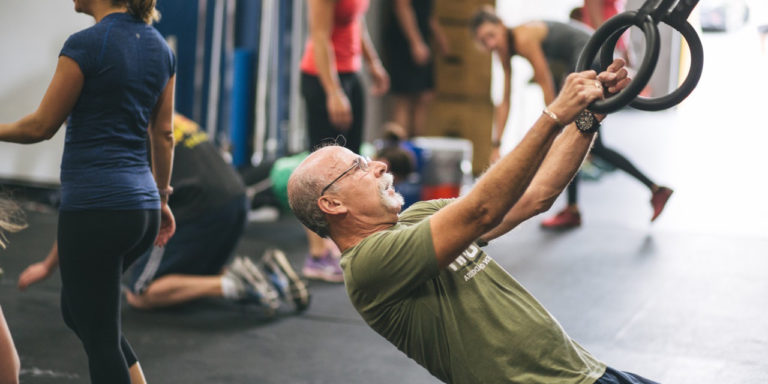 When Carleen did Murph this year, it was mostly just a regular training day; in fact, I’m confident it was one of two or three workouts she did that day. Jean’s version of Murph was an 800-meter brisk walk, 10-minute AMRAP (as many rounds as possible) of 5 ring rows, 10 push-ups on an elevated bar, 15 box squats, then another 800-meter brisk walk. This was simply scaling to challenge each individual’s physical and psychological boundaries. Both got great workouts, felt accomplished, and achieved fitness results.
When Carleen did Murph this year, it was mostly just a regular training day; in fact, I’m confident it was one of two or three workouts she did that day. Jean’s version of Murph was an 800-meter brisk walk, 10-minute AMRAP (as many rounds as possible) of 5 ring rows, 10 push-ups on an elevated bar, 15 box squats, then another 800-meter brisk walk. This was simply scaling to challenge each individual’s physical and psychological boundaries. Both got great workouts, felt accomplished, and achieved fitness results.
Our goal in CrossFit is to “increase our athletes’ work capacity across broad time and modal domains (fitness).” In layperson terms, we want our athletes to be good at as many physical tasks as possible for seconds, minutes, and maybe even hours. We expect them to be able to perform low reps at high weights, high reps at bodyweight, and everything in between to prepare us for any imaginable physical task we can be confronted with. We are a general physical preparedness (GPP) program. If our athletes are injured, whether that’s acutely like rhabdo, or chronically from over-training or poor movement, we are not achieving these ends. All of this is discussed at length at our Level 1 and 2 Courses and online courses.
Here are more teaching points from our Level 1 Course, which are also included in our CrossFit Level 1 Training guide:
- Relative Intensity means designing the workout so the individual works at their physical and psychological tolerances ( e.g., Carleen and Jean’s Murph workout).
- During our lecture on technique, we discuss the CrossFit Charter: Mechanics, Consistency, and Intensity. Here, we emphasize the development of the athlete in their CrossFit program. First, we want them to move well and understand mechanics. Then, we want them to build consistency in showing up to the program so they can develop the adaptations that will allow them to perform exercise intensely.
- We also educate our trainers on how to evaluate an effective program by teaching them Safety, Efficacy, and Efficiency. An effective program will be safe, achieve the desired results, and take only as long as it takes to hit the intended stimulus.
- In both of our Programming lectures, almost half the time is spent discussing scaling for beginners, intermediate, advanced, and injured athletes. We also offer online Programming and Scaling courses.
- We also have a mandatory reading of an article about rhabdomyolysis that includes the causes and symptoms.
- And more.
As a CrossFit trainer, I am expected to know these principles and much more. That’s because CrossFit expects us to leave our courses understanding how to scale effectively, and they do by passing exams that test these concepts. A program that challenges the toughest athletes in the world requires a sound understanding of training. We would never condone an athlete who’s only done four CrossFit workouts to do Murph, and we wouldn’t have an athlete that’s never performed pull-ups doing 50 in a single session in their second week.
At CrossFit affiliates, many of us can perform Murph because we have been training for the demands of that workout, but the reality is that the majority of the athletes scaled the workout because that is the responsible training process. That doesn’t mean the long-term goal isn’t to complete it; for many athletes, that is the goal. It’s just that aiming to complete it has to be earned by consistently training.
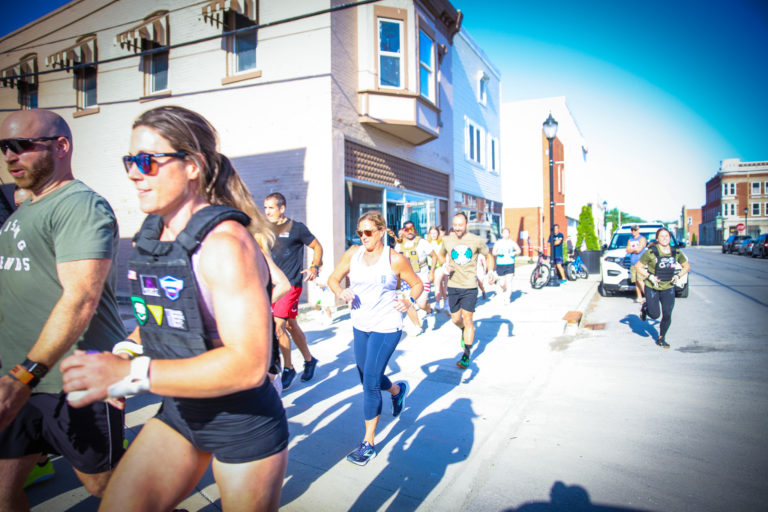
So, when a doctor “warns against a CrossFit challenge,” we agree if they’re referring to someone who is unsupervised and untrained performing the most challenging variation of that workout. But we disagree if they’re referring to someone walking into an affiliate to be coached by one of our accredited trainers, educated in the concepts above. If you’re not consistently training the movements of Murph in high volumes, you should not do that workout. Like many other people, Jean has trained in CrossFit for 18 years without a single training injury. The reality is that the vast majority of CrossFit affiliates completed Murph or some other challenging Hero workout without any issues. In fact, it likely was an overwhelmingly positive event that drove our affiliate community because hard work and determination drive camaraderie.
As CrossFit continues to draw more interest from the fitness community at large, we are prone to others imitating or even attempting our most challenging workouts. The negative results from these are not surprising. CrossFit isn’t dangerous; egos are. We have evidence over 20 years showing significant changes in weight loss, reversal of chronic disease, and overall improvement of life. This is being done every day in the affiliates. Anyone can do CrossFit, but it must be learned and practiced. If you’re interested in CrossFit, find someone to help guide your process and find an accredited trainer.
If you can’t find a trainer and want to try CrossFit on your own, don’t be scared! Just be safe. Leave your ego at the door and read up on CrossFit scaling to help you get a great training session.
As long as you remember our charter of:
MECHANICS
CONSISTENCY
INTENSITY
You will reap the long-term benefits of our program and avoid rhabdomyolysis.
Resources
- Exertional Rhabdomyolysis in Athletes: Systematic Review Current Perspectives
- Exertional Rhabdomyolysis in the Athlete: A Clinical Review
- CrossFit rhabdomyolysis: A case series of 11 patients
- Let’s Break It Down: Rhabdomyolysis In Ultramarathons
- Twelve cases of exertional rhabdomyolysis in college football players
- Exertional rhabdomyolysis, acute renal failure, marathon runners
- Running Rhabdomyolysis Renal Failure: Who’s at Risk
- Exertional Rhabdomyolysis After CrossFit Exercise
About the Author
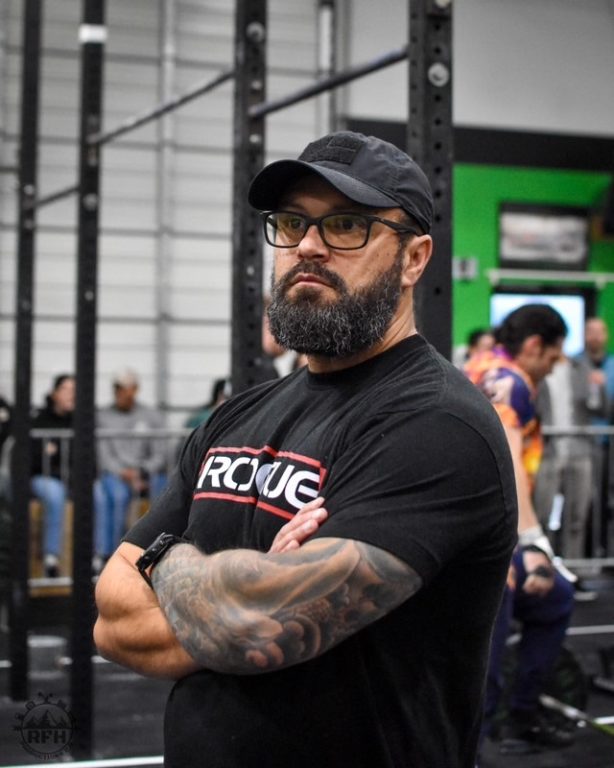 Chris McDonald (CF-L4) is a strength and conditioning coach with over two decades of experience helping athletes. Currently coaching at CrossFit Fort Vancouver in Vancouver, Washington, McDonald has been instrumental in guiding athletes of all kinds, including CrossFit competitors, and high school and collegiate sport athletes. A lifelong learner, McDonald holds a Bachelor of Science in Biology (2002) and a Master of Science in Exercise Science (2007). His professional credentials include Certified Level 4 CrossFit Trainer (2008), Certified Strength and Conditioning Specialist (CSCS, 2006), and multiple certifications from the National Academy of Sports Medicine (NASM, 2005).
Chris McDonald (CF-L4) is a strength and conditioning coach with over two decades of experience helping athletes. Currently coaching at CrossFit Fort Vancouver in Vancouver, Washington, McDonald has been instrumental in guiding athletes of all kinds, including CrossFit competitors, and high school and collegiate sport athletes. A lifelong learner, McDonald holds a Bachelor of Science in Biology (2002) and a Master of Science in Exercise Science (2007). His professional credentials include Certified Level 4 CrossFit Trainer (2008), Certified Strength and Conditioning Specialist (CSCS, 2006), and multiple certifications from the National Academy of Sports Medicine (NASM, 2005).